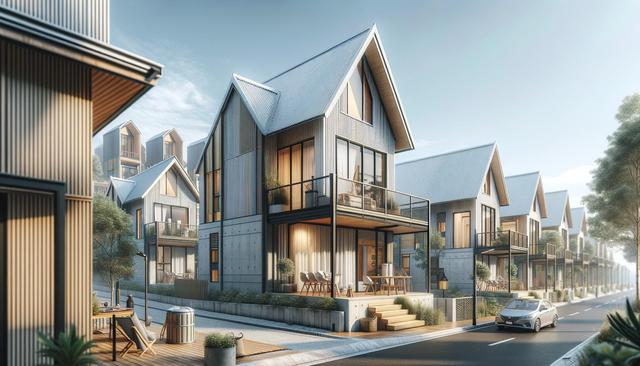Understanding Prefabricated Housing
Prefabricated houses, commonly referred to as prefab homes, are built in sections at a manufacturing facility and then transported to the building site for assembly. This method of construction differs significantly from conventional building practices, which typically involve on-site construction that can be time-consuming and costly. The controlled environment of a manufacturing facility allows for more efficient use of materials, reduced waste, and consistent quality.
There are various types of prefabricated homes, including modular, panelized, and manufactured homes. Modular homes are built in large sections and assembled on-site, while panelized homes are delivered as flat panels and constructed on the foundation. Manufactured homes are built entirely off-site and transported as a complete unit. Each type has its own set of advantages, depending on the homeowner’s needs and the local regulations.
The Economic Advantages of Prefab Construction
One of the most compelling benefits of prefabricated houses is their cost-effectiveness. Because much of the construction occurs in a factory setting, labor costs are lower and construction timelines are significantly reduced. These savings are passed on to the buyer, making prefab homes an appealing option for budget-conscious individuals and families.
Key cost-saving aspects of prefab homes include:
- Reduced construction time compared to traditional homes
- Lower labor costs due to efficient factory assembly
- Minimal material waste, which reduces overall expenses
- Lower utility costs with energy-efficient designs
Additionally, many prefab homes are designed with sustainability in mind, incorporating energy-efficient appliances, insulation, and building materials. These features not only help the environment but also contribute to long-term savings on energy bills.
Design Flexibility and Customization
Contrary to the misconception that prefabricated homes lack uniqueness, modern prefab housing offers a remarkable range of styles and customization options. Homeowners can choose from a variety of layouts, sizes, and finishes to match their aesthetic preferences and functional requirements. Some manufacturers even offer tailored design services, allowing for a more personalized experience.
Common customization options include:
- Floor plan adjustments to accommodate specific needs
- Choice of exterior finishes such as wood, brick, or metal
- Interior fixtures and fittings, including cabinetry and flooring
- Smart home technology integration
This design flexibility ensures that buyers do not have to compromise on comfort or style, even when working within a limited budget.
Durability and Compliance with Building Codes
Many prospective homeowners question whether prefabricated homes are as durable as traditional houses. The answer is a resounding yes—provided they are built to meet local building codes and regulations. In fact, because prefab homes must withstand transportation and installation stresses, they are often built to higher structural standards than site-built homes.
Additionally, reputable manufacturers ensure that their homes comply with all regional building codes, including those related to safety, energy efficiency, and environmental impact. This compliance guarantees that prefab homes are not only safe but also legally approved for permanent residency.
Key advantages related to durability include:
- Stronger framing to endure transport and setup
- Quality control in factory settings
- Use of modern, resilient building materials
These factors contribute to the longevity of prefabricated homes, making them a viable long-term investment.
Accessibility and Installation Process
Another reason why prefabricated houses are gaining popularity is their accessibility. They are often more readily available than traditional homes, especially in areas with housing shortages. The quicker turnaround time from order to occupancy makes prefab homes an excellent choice for those needing housing on a tight schedule.
The installation process is typically straightforward. Once the foundation is prepared, the prefabricated components are delivered and assembled on-site. Depending on the size and complexity of the home, the entire process—from delivery to move-in—can take just a few weeks.
Steps in the installation process usually include:
- Site preparation and foundation laying
- Delivery of prefabricated sections
- On-site assembly and finishing touches
- Final inspections and utility connections
This efficient process minimizes disruption to the surrounding area and reduces the environmental footprint associated with prolonged construction activities.
Conclusion: A Practical Solution for Modern Homeowners
For individuals and families exploring affordable housing options, prefabricated homes present a practical and efficient solution. With their combination of cost-effectiveness, design flexibility, and durability, prefab homes are well-suited to meet the demands of modern living. As housing markets continue to evolve, the appeal of prefabricated construction is likely to grow, offering a reliable alternative to conventional building methods without compromising on quality or comfort.






